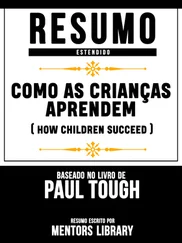14.1 Reproducing formatting
Unless the client specifies otherwise, you should reproduce the formatting of the original document as closely as possible. This is especially true of official documents such as birth, marriage and death certificates. Try to use the same font, type style (i.e. bold, italics, etc.), spacing and page layout as the original document. Clients have different style conventions when it comes to reproducing official seals, stamps and graphics. Some clients prefer that you copy these graphic elements onto the translation using a screen shot or image manipulation program. Others (including some attorneys and judges) feel that copying graphic elements can make your translation look like a forged original document. In that case, you should generally replace the graphic element with a notation in square brackets, such as:
[Stamp: City of Montreal, Vital Records Registry] Whichever method you choose, always translate the text in any graphic elements.
14.2 Inserting translator’s notes
Translator’s notes can be very useful to someone reading a translation. For example, the source document might include cultural references that don’t make sense to someone from another culture who would be reading the translation. A direct translation of an expression such as “it’s a home run” might mean nothing to someone who has never seen a baseball game. Or the source document may include concepts that have no direct equivalent in the target language. For example, the U.S. legal concepts of misdemeanor and felony do not exist in many other legal systems.
You can insert translator’s notes in square brackets, for example: [Translator’s note: The Élysée Palace is the official residence and office of the President of France]
Or, you can insert them as footnotes or endnotes. Here again, you’ll find that client preferences vary. Some clients will want you to just translate the document “as is,” without inserting any of your own comments. Others will see translator’s notes as a great value added and will value your insider insights! It’s best to ask your clients how they feel about translator’s notes and follow each client’s preference.
14.3 Noting errors in the source document
At some point in your freelance work, you will be given a source document that has an error in it. Sometimes there are inconsistencies within the document itself: a company’s name is spelled one way in one sentence and a different way in another sentence. There may be factual inaccuracies in the document, such as “During the 2010 Winter Olympics in Salt Lake City…” Or there may errors that seem like proofreading mistakes: “The plaintiff files a lawsuit against the plaintiff.”
The standard way of indicating source document errors in translations into English is the [sic] notation. Sic (pronounced like the English word “sick”) is a Latin word meaning “as such” or “thus,” and is used in English documents to point out obvious errors. For example, your translation would read “The plaintiff files a lawsuit against the plaintiff [sic].” When translating into English, you can also use [sic] to point out errors in any text that is already in English in the source document. For example, if the source document is in German but includes a quote in English that reads, “We will use these informations to make our decision,” you could retype the quotation with a [sic] notation after the word “informations.”
14.4 Reproducing register
“Register” means the level of formality or informality of the source document. When you’re translating, you should always use the same register as the source document uses, unless your client tells you otherwise. For example, “That is acceptable” and “It’s OK” are two ways of communicating approval using different registers. If you’re given a source document written in street slang, don’t translate it as if it were written by a lawyer. Register is especially important when you’re translating documents that are intended for a certain audience. A medical questionnaire for children needs to have a very different register than an article in a medical journal, so make sure to write for your client’s target reader.
14.5 Preparing a glossary and managing terminology
Bilingual or multilingual glossaries can be really helpful in your translation work, especially if you translate highly technical documents or documents that use a lot of client-specific terminology. Sometimes clients prepare glossaries because they use terms that no one outside their organization would understand, like “CEX: Company-wide Evaluation Exercise.” Clients may also prepare glossaries because they want certain expressions translated in a certain way all the time.
Much of the time, translation clients haven’t really thought about glossaries or terminology before they contact a translator. You can help yourself and the client by keeping your own glossaries for all of the documents you work on; some translators like to keep their glossaries by project or by client and some keep one huge glossary for everything that they work on.
You can keep your glossaries in a simple table format using a word processing or spreadsheet program, or you can manage your terminology using your translation memory tool of choice or a specialized terminology management program. See the Translation Technology chapter of this book for more on terminology management tools.
14.6 Preparing a style guide
Especially if you work for direct clients, style guides can help make your translations more consistent and can help you catch errors in the source documents that you’re sent to translate. A style guide is a set of rules for spelling, formatting and punctuation; some companies may have in-house style guides that they will want you to use. For example, a style guide might indicate that a person’s title should be used the first time that person’s name is mentioned, but not in subsequent mentions, i.e. “President Obama” and then “Mr. Obama.” A style guide might also include information about formatting, for example what fonts and type styles should be used in the heading of every press release. A style guide can also help you catch inaccuracies in the source documents, for example if you maintain a a list of the names of your client’s employees and titles.
When your clients really care about their translations, a style guide can also help you solicit the client’s input on grammar and usage issues that don’t have a cut-and-dried answer. For example, how does the client feel about the singular use of “their”—as in, “Everyone should bring their own lunch,” as opposed to “Everyone should bring his or her own lunch.” Are there certain words or phrases that the client loves or hates?
The most popular style manual in the United States is probably the Chicago Manual of Style ; a book like this or a similar style manual for your target language is good to have on your desk. When you want to resolve a question like whether to use a comma or a semicolon, whether to put a punctuation mark inside or outside a quotation mark, etc. a style manual is indispensable.
Resources
U.S. Government agencies employing translators and interpreters
Central Intelligence Agency
The CIA cia.gov offers a number of opportunities such as Foreign Language Instructor, Language Specialist, Foreign Media Analyst and National Clandestine Service Language Officer. Requirements and salaries vary, but most positions are full-time and the largest number of opportunities is in the Washington, DC area. Applicants must be U.S. citizens and willing to complete a medical and psychological exam, polygraph interview and background investigation.
Читать дальше
![Коринн МакКей How to Succeed as a Freelance Translator [calibre 3.46.0] обложка книги](/books/402693/korinn-makkej-how-to-succeed-as-a-freelance-transl-cover.webp)


![Джон Ирвинг - Našlė vieneriems metams [calibre]](/books/384320/dzhon-irving-naŠle-vieneriems-metams-calibre-thumb.webp)
![Джонатан Димблби - Barbarossa - How Hitler Lost the War [calibre]](/books/385421/dzhonatan-dimblbi-barbarossa-how-hitler-lost-the-w-thumb.webp)







